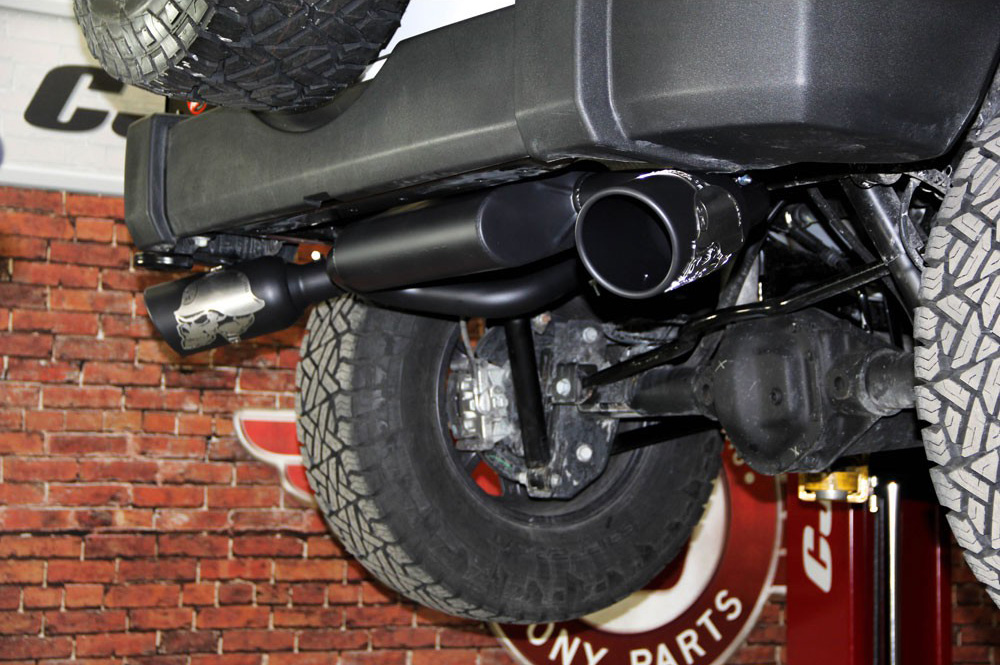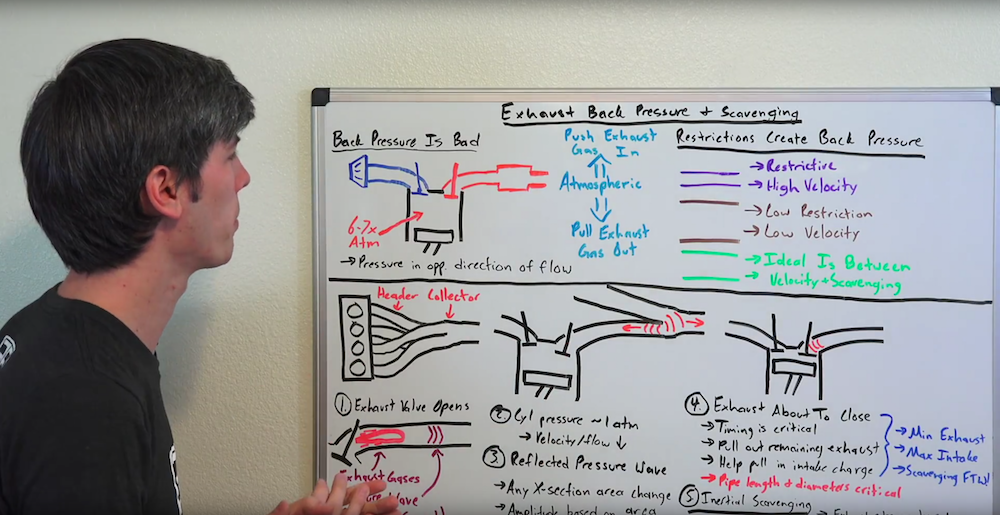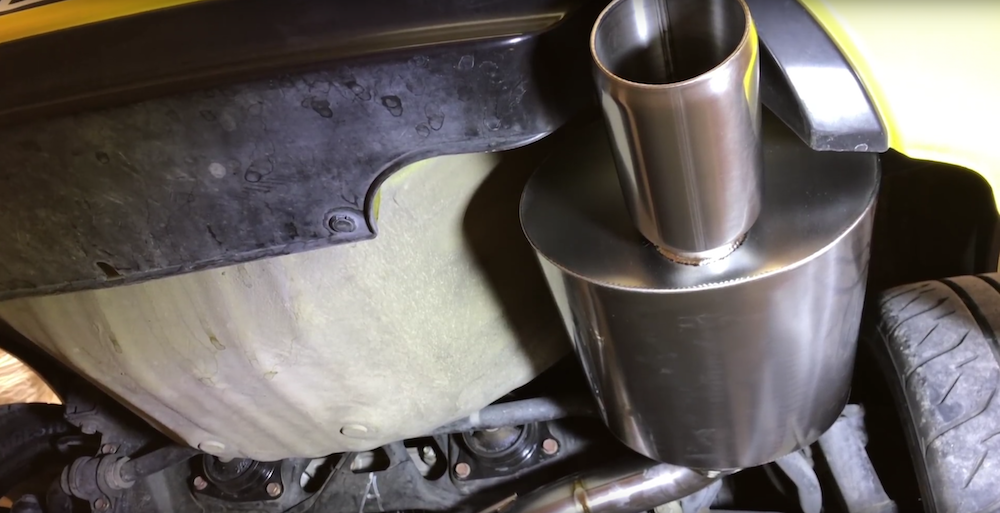Is Exhaust Back-Pressure Actually Bad?
Here’s the nitty-gritty science of what happens when you have too much of something you need only in small quantities.
We’ve all seen those incredibly cheap cars that are sporting massive exhaust systems. While some enjoy the way a large exhaust system makes their cars sound, it’s not a smart idea to just tack on a massive exhaust system onto a vehicle. Part of the reason why it’s a bad idea boils down to the concept of exhaust back pressure.
Jason Fenske from Engineering Explained always does a stellar job of taking incredibly complex concepts and condensing them into easily-digestible nuggets for those of us that don’t have engineering degrees. Fenske’s latest video talks about exhaust back pressure and the host isn’t holding any punches back, as he claims, from the get-go, that exhaust back pressure is bad.
“Now the whole purpose of an exhaust is to evacuate those spent gases as quickly and as efficiently as possible,” states Fenske. Increasing back pressure, as Fenske explains, “does the opposite of what you want your exhaust to do.”

That makes sense, right? But as you probably guessed by now, it’s not really that simple. Just before the exhaust stroke, the piston in the cylinder hits the bottom of its stroke and the exhaust valve opens. Since the atmospheric pressure inside the chamber is higher than it is outside, that high pressure air inside the chamber naturally wants to exit to the lower area of pressure via the exhaust system. Back pressure, which Fenske defines as “pressure with the opposite direction of flow,” would hinder the movement of exhaust fumes from the chamber into the exhaust system.
Clearly, that isn’t a good thing. But, you might say, you need a little back pressure to get things going, right? And you would be correct. Fenske points towards two different types of exhaust systems to explain why a little exhaust back pressure is necessary. A tiny, small diameter, exhaust system, is restrictive and creates a lot of back pressure. The small exhaust system also has a high velocity, as all of the fumes are trying to escape the engine as quickly as possible. A large exhaust system, on the other hand, is the exact opposite with low velocity and low restriction, which means the exhaust gases are traveling too slowly to exit the engine. The ideal setup is to have an exhaust system that balances velocity and minimal back pressure.

All of this depends on the length of the tube, diameter of the pipe, and inertial scavenging, which refers to the process of an exhaust pulse that creates a low-pressure area behind. Don’t worry if you’re lost, Fenske uses his trusty white board to make things seem a lot easier than they really are.
The main takeaway from the video is that automotive engineers spent a lot of time perfecting all of this stuff, and if you were to put a different header or exhaust setup onto the vehicle, it could result in less power.
“If you were to tune this incorrectly, if you were to have the wrong length, you can hurt the performance of it [the engine] if you have this wave arrive at the incorrect time,” says Fenske. “It can actually be detrimental and cause you to have even less power than if you didn’t do this at all.”

Unless you know what you’re doing, don’t mess with your car’s exhaust system. Automotive engineers know what they’re doing and get paid the big bucks to make sure all of this is working optimally in your vehicle.
